Thrush Pictures in Females (Medical Visual Identification)
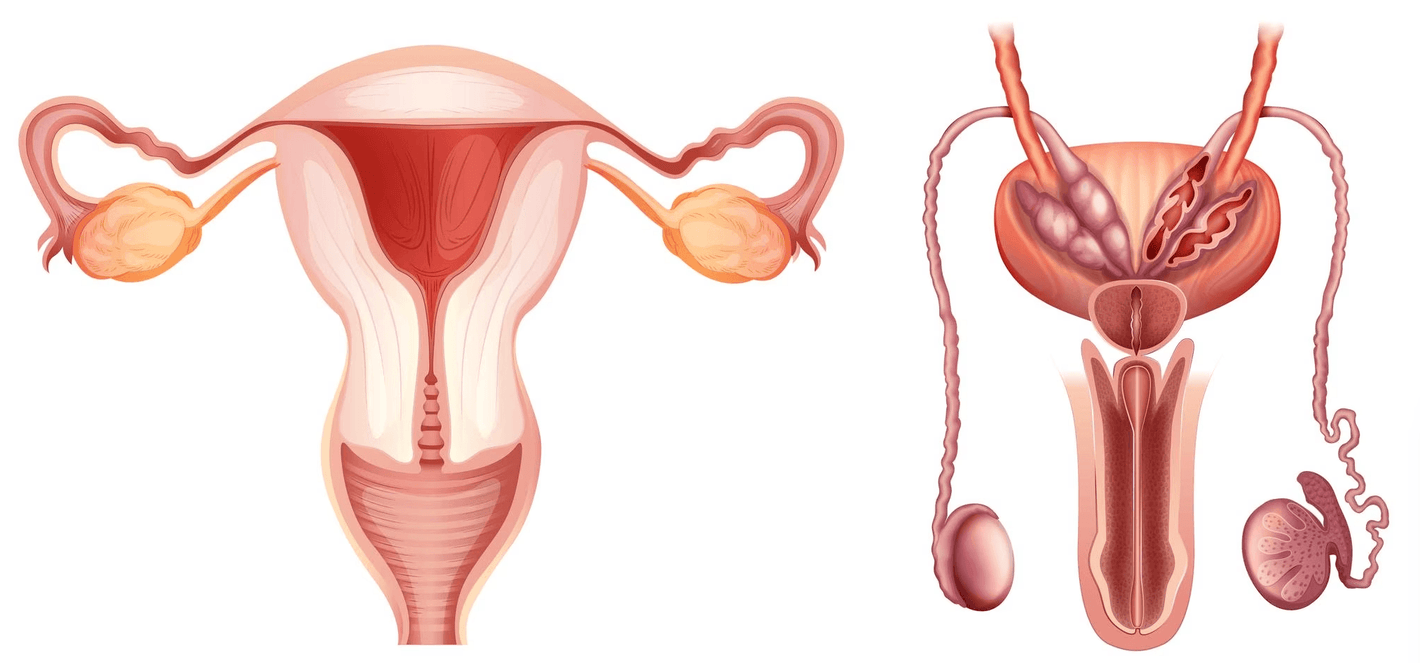

Thrush, known as vaginal candidiasis, is a common fungal infection caused by the overgrowth the fungus called Candida, a type of vaginal yeast infection which includes candida albicans. Thrush affects approximately 75% of women at some point in their lives, according to Dr Jane Peters, a gynaecologist and expert in women's health. While it is usually harmless, like other vaginal yeast infections, thrush is known for causing discomfort and negatively impacting the quality of life. Therefore, raising awareness about the visual signs and symptoms of thrush infection is crucial for early identification and effective thrush treatment. Click here for thrush treatment.
WARNING: The following content contains sensitive medical photos that some viewers may find distressing. Viewer discretion is advised. Scroll down to the bottom of this article for thrush pictures female.
Visual identification and awareness of the thrush symptoms associated with thrush in females are essential for prompt diagnosis and thrush treatment. Early intervention helps prevent complications, such as the spread of infection to other areas of the body. Moreover, enhanced awareness about thrush empowers women to seek appropriate medical care and engage in self-care practices to prevent recurrent infections, as explained by Dr Peters.
One of the most common and visually identifiable symptoms of thrush in females is the presence of abnormal vaginal white discharge. The discharge is typically thick, white, and has a cottage cheese-like consistency. While vaginal white discharge varies among individuals, any significant change in the colour, consistency, or odour might indicate the presence of an infection such as thrush, as explained by Dr Peters.
Another visual sign of thrush in females is redness and swelling of the vulva, which is the external part of the female genitalia. The inflammation, known as vulvitis, causes discomfort and might be accompanied by itching or a burning sensation like a painful rash. In some cases, the redness and swelling extends to the vaginal opening and surrounding skin.
Itching is a common symptom associated with thrush in females, and it affects both the vulva and the vagina. Persistent and intense itching is visually evident, as it might cause affected individuals to scratch the area frequently, leading to skin irritation and further redness. It is important not to ignore persistent itching, as it may be indicative of an underlying infection that requires treatment, as emphasised by Dr Peters.
While not visually evident, painful urination (dysuria) and painful intercourse (dyspareunia) are common symptoms of thrush in females. These symptoms are potentially related to the inflammation and irritation caused by the Candida infection. If a woman experiences pain during urination or intercourse, it is important to consult a healthcare professional for a proper evaluation and diagnosis, as this might be a sign of thrush or another underlying condition, as advised by Dr Peters.
Candida is a type of yeast that normally resides in small amounts within the body, including the vagina. However, when conditions allow for an overgrowth of Candida, it potentially leads to thrush. An imbalance in the vaginal environment, such as a change in pH levels or a reduction in healthy bacteria, lead to Candida overgrowth and the development of thrush, as explained by Dr Jane Peters. Additionally, candida albicans is known as the most common type of vaginal yeast infection.
Hormonal changes contribute to the development of thrush in females. For example, fluctuations in oestrogen levels during pregnancy, menstruation, or while taking oral contraceptives alter the vaginal environment and promote Candida growth. Women must be vigilant about monitoring their vaginal health during periods of hormonal changes, as they are at an increased risk for developing thrush, as stated by Dr Peters.
The use of antibiotics inadvertently disrupts the balance of microorganisms in the vagina, killing off beneficial bacteria and allowing Candida to proliferate. If a woman is prescribed antibiotics, it is important to discuss the potential risk of thrush with a healthcare professional and to be aware of the signs and symptoms of an infection, as advised by Dr Peters.
A weakened immune system makes it more difficult for the body to keep Candida growth in check, increasing the likelihood of thrush development. This is due to various factors, such as stress, lack of sleep, or underlying health conditions like HIV. Dr Peters emphasises the importance of maintaining a healthy lifestyle to support a robust immune system and reduce the risk of infections like thrush.
Diabetes is able to contribute to the development of thrush in females. High blood sugar levels creates a favourable environment for Candida growth, and individuals with poorly controlled diabetes might be at a higher risk for developing infections. Women with diabetes must regularly monitor their blood sugar levels and work with their healthcare providers to effectively manage their condition to reduce the risk of thrush, as recommended by Dr Peters.
A physical examination is the first step in diagnosing thrush in females. A healthcare professional visually inspects the vulva and vaginal area for signs of inflammation, discharge, and other symptoms associated with the infection. Accurate visual identification of thrush symptoms is crucial for a correct diagnosis and appropriate treatment, as stated by Dr Peters.
In some cases, laboratory tests are necessary to confirm a thrush diagnosis. A healthcare professional takes a swab of the vaginal discharge, which is then analysed in a laboratory to determine the presence of Candida. These tests are particularly useful in cases where the visual symptoms are not definitive or when an alternative diagnosis is being considered.
Accurate visual identification of thrush symptoms is essential because other conditions mimic the signs and symptoms of a Candida infection. For example, bacterial vaginosis, sexually transmitted infections, and dermatological conditions presents with similar symptoms. Distinguishing between thrush and other conditions is critical to ensure appropriate treatment and prevent potential complications, as emphasised by Dr Peters.
The primary treatment for thrush in females is the use of antifungal medications, which target the Candida causing the infection. Antifungal medications are available in various forms, such as creams, ointments, and pessaries, which are inserted directly into the vagina. In some cases, oral medications are prescribed as well, as explained by Dr Jane Peters. It is important to follow the healthcare professional's instructions and complete the full course of treatment to ensure the infection is adequately treated.
Topical antifungal creams and ointments are commonly used to treat thrush in females. These medications are applied directly to the affected area, usually once or twice daily for a specified duration. When using topical treatments, it is essential to apply the medication consistently and for the full duration prescribed, even if symptoms improve before the treatment course is complete, as advised by Dr Peters.
Oral antifungal medications might be prescribed for more severe or persistent cases of thrush. These medications, such as fluconazole, are typically taken as a single dose or over a short course of a few days. Oral medications is highly effective in treating thrush, but it is crucial to discuss potential side effects and drug interactions with a healthcare professional before use stated by Dr Peters.
In addition to conventional treatments, some individuals choose to explore natural remedies to manage thrush symptoms. These include the use of probiotics, tea tree oil, or other alternative therapies. While natural remedies provide some relief for certain individuals, it is important to consult a healthcare professional before use, as the effectiveness and safety of these treatments varies, cautions Dr Peters.
Practising good hygiene helps prevent thrush in females by maintaining a healthy vaginal environment. Washing the genital area gently with warm water and mild soap, avoiding douching, and changing sanitary products frequently helps reduce the risk of infection recommends Dr Peters.
Wearing breathable, cotton underwear and avoiding tight-fitting clothing helps prevent the growth of Candida by keeping the vaginal area dry and well-ventilated. Selecting clothing that allows air circulation, avoid tight fitting clothing and nylon underwear, helps reduce the risk of developing thrush and promotes overall vaginal health.
The use of probiotics, which are beneficial bacteria, helps maintain a healthy balance of microorganisms in the vagina and prevent the overgrowth of Candida. While more research is needed to confirm the effectiveness of probiotics in preventing thrush, some individuals find them helpful as a preventive measure, stated by Dr Peters.
Avoiding potential irritants, such as harsh soaps, fragranced products, and dyes, helps prevent irritation and inflammation that contributes to the development of thrush. Choosing gentle, fragrance-free products for the genital area helps minimise the risk of infection and maintain a healthy vaginal environment as suggested by Dr Peters.
Sensitive photos are beyond this point, do not scroll down if you do not want to see pictures of thrush in females.
WARNING: The following content contains sensitive medical photos that some viewers may find distressing. Viewer discretion is advised.

The image depicts a close-up view of the inside of a person's mouth, showing the presence of oral thrush. The tongue, roof of the mouth, and inner cheeks display patches of white, creamy, and slightly raised lesions. These lesions have a cottage cheese-like appearance and cover a significant portion of the affected areas. Surrounding the lesions, the oral mucosa appears reddened and inflamed, indicating irritation and discomfort associated with the infection. The visual representation of oral thrush in the image highlights the characteristic symptoms of the condition, emphasising the need for appropriate diagnosis and treatment.
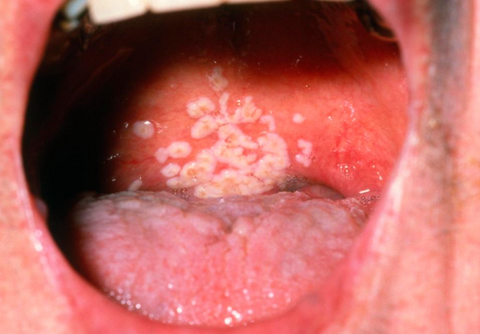
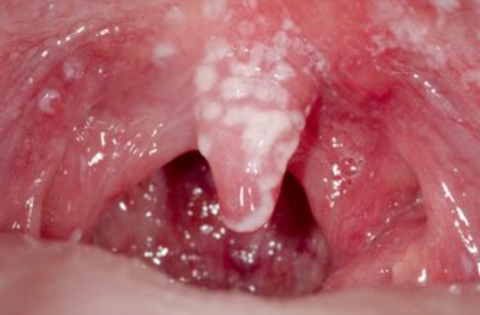
WARNING: The following content contains sensitive medical photos that some viewers may find distressing. Viewer discretion is advised.
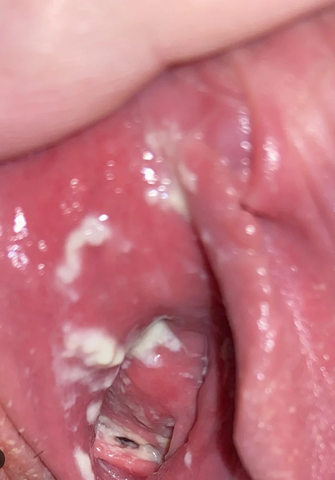
The image provides an internal view of the female genital area, specifically focusing on the vaginal canal, to depict vaginal thrush. The vaginal walls appear inflamed and reddened, indicating irritation and discomfort associated with the infection. Scattered along the surface of the vaginal walls, there are patches of white, creamy, and slightly raised lesions, resembling a cottage cheese-like consistency. These lesions are characteristic of vaginal thrush and represent the overgrowth of Candida yeast in the affected area. The image emphasises the importance of recognising the signs and symptoms of vaginal thrush to ensure appropriate diagnosis and treatment.
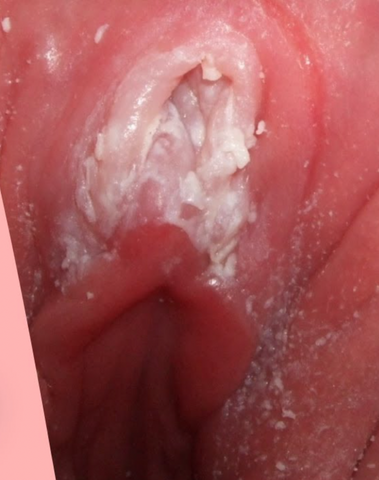








Plus get the inside scoop on our latest content and updates in our monthly newsletter.